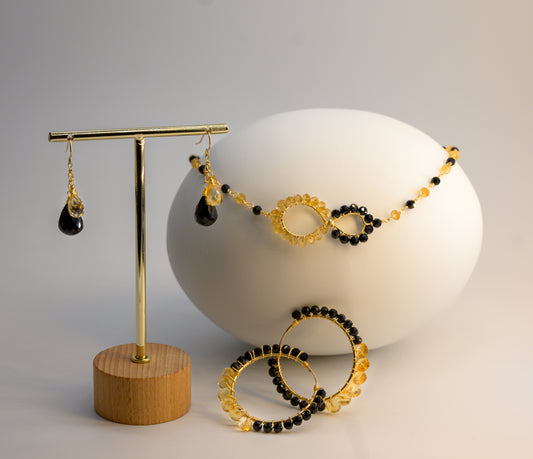History
Labradorite, with its mesmerizing play of colors, originates from the Labrador Peninsula in Canada, where it was first discovered in the 18th century. This captivating stone quickly became a subject of intrigue among the local Inuit people who believed it contained the Northern Lights. According to Inuit legend, a warrior struck labradorite with his spear, releasing the aurora borealis into the sky. This belief imbued the stone with mystical significance, linking it to ancient magic and the exploration of the cosmos.
Meanings and Symbolism
Labradorite is often associated with transformation and magic. It's considered a stone of protection, providing a barrier against negative energies. Its dazzling array of colors symbolizes the awakening of one's own inner spirit and intuition. Labradorite is also thought to promote courage, perseverance, and strength during times of change, making it a beacon for those navigating through transitions.
Appearance and Characteristics:
- Semi-precious gem, alternative November birthstone, and Saturday's birthstone.
- Zodiac stones for Cancer, Scorpio, Sagittarius, and Leo; planet associations with Uranus or Pluto.
Color and Iridescence:
- Typically white, gray, yellow, or colorless, but shines with labradorescence.
- Blues and oranges are common in the iridescent display.
- Not all stones show labradorescence; some may display blueish-white aventurescence.
Healing Properties and Uses
Labradorite is revered for its supposed metaphysical properties. It's believed to enhance psychic abilities, such as prophecy and clairvoyance, and to facilitate communication with higher realms. On a physical level, labradorite is said to relieve stress, regulate metabolism, and balance hormones. It's also used to treat disorders of the eyes and brain, stimulate mental acuity, and reduce anxiety and depression.
Physical Properties
Labradorite is a type of feldspar, characterized by its unique labradorescence – a stunning optical effect that displays a spectrum of colors due to light refracting within its layers. This phenomenon can show hues of blue, green, gold, orange, red, and sometimes violet. Labradorite has a Mohs hardness of 6 to 6.5, making it reasonably durable but still prone to scratching and chipping if not handled with care.
Care and Maintenance
To care for labradorite, clean it gently with a soft cloth and mild soap in lukewarm water. Avoid using harsh chemicals or ultrasonic cleaners. Labradorite should be stored away from other gemstones to prevent scratches. Direct sunlight can fade its colors, so it's best kept out of prolonged exposure to intense light.
Modern Sources:
- Madagascar is the most abundant source.
- Significant deposits in Finland, Canada, the USA, Australia, China, France.











